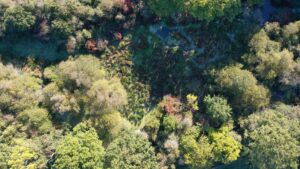
Authors’ hopes for 2026
Wild hopes for the year ahead Published January 2026 In 2025 we hosted some of the biggest movers and shakers in the nature recovery movement
Home / The Great Butterfly Summer of 2025

Matt Phelps | Lead Ecologist
Published July 2025
Book one of the last spots on our Butterfly Safaris this summer
This summer is a butterfly bonanza, one of the best in living memory. Even lepidopterists, the butterfly experts, are in awe, loving every moment, hoping against hope that this glory season will never end.
And there’s one story that stands out above all. Around the canopies of Knepp’s oaks and through the sallow groves, an imperial spectacle has been unfolding. The purple emperor – the UK’s second largest butterfly, a rare species chosen for Knepp’s logo – is breaking all the records. It’s not just that they’re being seen frequently – it’s that they’re everywhere. They’ve been fluttering into the hut in our educational field station, into our stockman’s kitchen and the greenhouse of our rewilded Walled Garden. Groups of ten or more spiral into the sky together, an unprecedented sight.
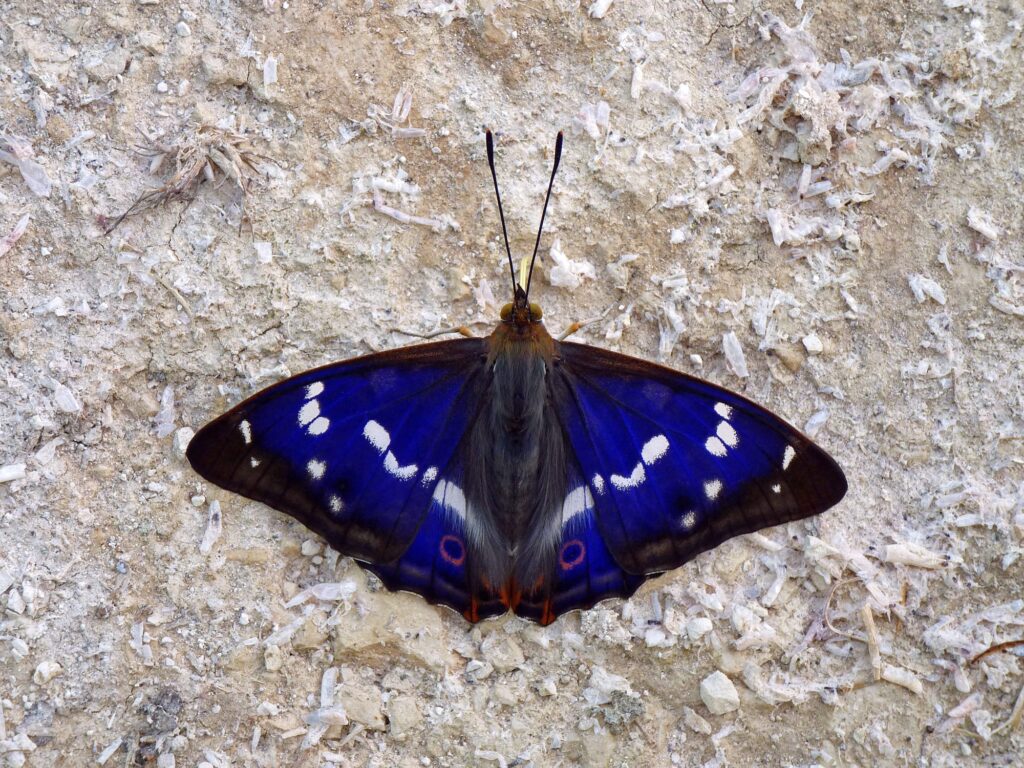
In a standardised count, repeated weekly along the same strip of land at Knepp throughout the purple emperor flight season every year since 2014, the number has reached 80. This comfortably beats the previous record of 66 in 2018; the last really big year for purple emperors.
Once thought to be elusive, almost mythical, the purple emperor is now a common delight at Knepp. The emperors are ambassadors of the wonder of a thriving, self-willed landscape. The crucial ingredient for their success at Knepp – now by far the biggest breeding hotspot for them in the UK – is the abundance of sallow. Sallow is a term for several willow species that naturally hybridise in the wild, producing vastly different sorts of leaves.
It has a windborne seed, which in a big ‘mast’ year can blanket acres of land, like a duvet of snow, in late spring. But it’s only viable for two weeks. In that time, the seeds need to find open, damp soil, or they cannot germinate. At Knepp, this opportunity is provided by the Tamworth pigs. Their rootling opens up the turf, exposing bare soil for the sallow to colonise. This is the magic of rewilded landscapes, where animal disturbance creates space for a cascade of interconnections.
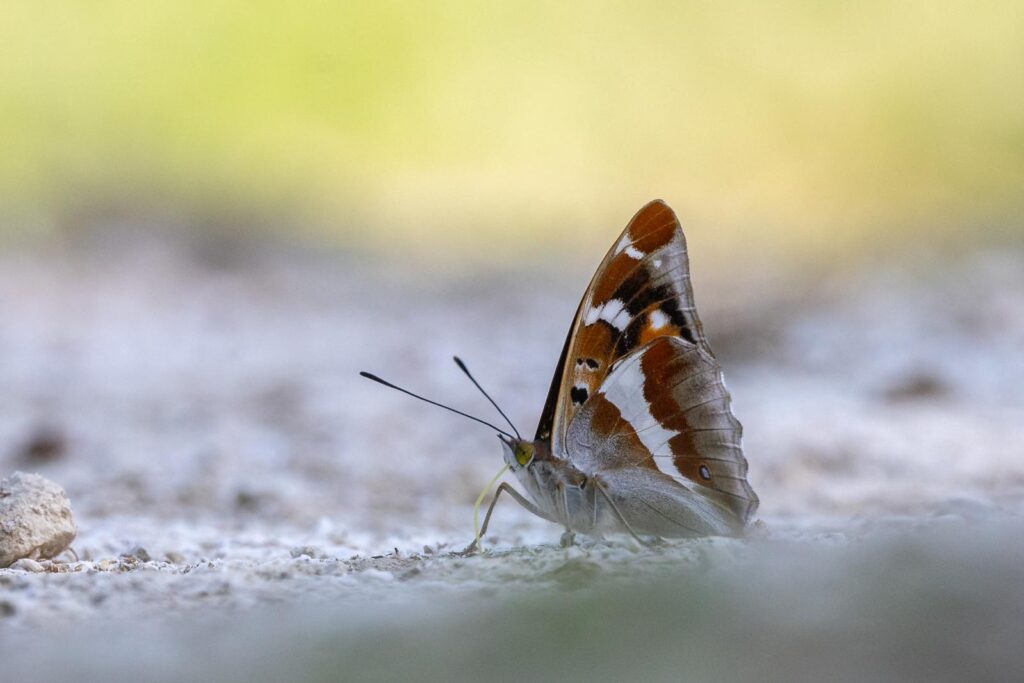
But the imperious purple emperor is particularly picky: not every sallow will do. The female – the purple empress – is after just one type of leaf that is suitable for laying her eggs on, where her tiny offspring will transform through five stages of their complicated life cycle, weathering the cold and storms of a British winter, until they’re ready to emerge as butterflies next summer. She wants leaves that are mid-green in colour, soft to the touch and with a matt rather than shiny finish – the leaves that are most palatable to young larvae. The enormous diversity of sallow at Knepp means that females can find what they’re looking for.
The purple emperor phenomenon at Knepp is changing scientists’ understanding of what these creatures need. Until now, purple emperors were classified as a butterfly of mature oak woodland. While the males display territorially around the canopy of oaks and feed on oak sap runs at Knepp, it’s clearly the sallow, not the oaks, that is the secret.
If we want to see more purple emperors across the UK, there’s an easy fix. We need to welcome back sallow, a shrub traditionally denigrated as useless and undesirable by farmers and landowners alike.
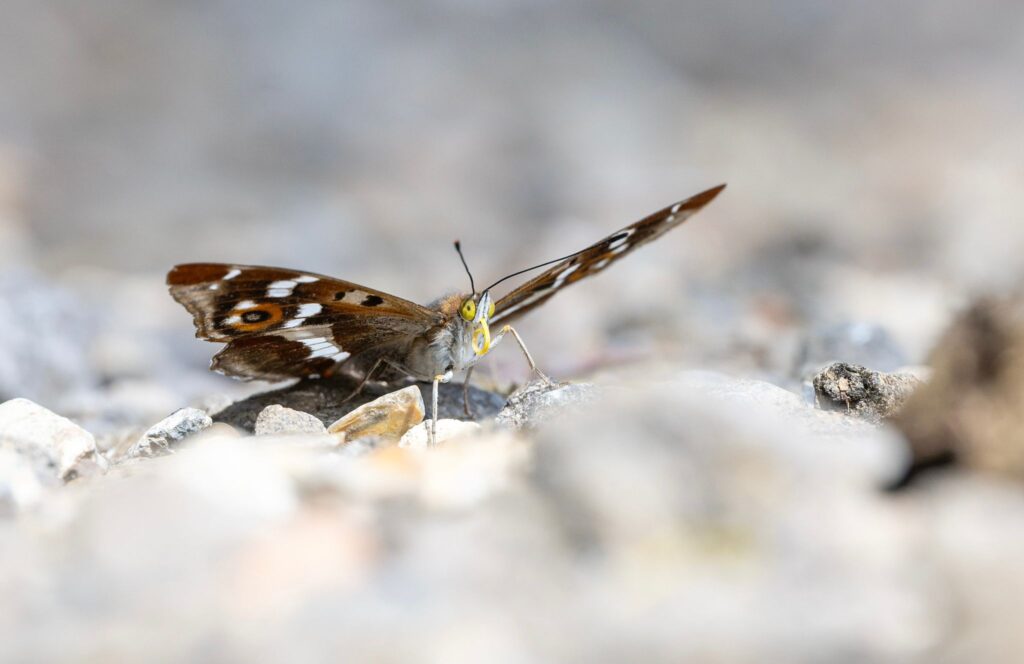
As adults, purple emperors can have a wingspan of up to 8.5cm. At a glance, you could mistake the large, black silhouettes around the tree tops for birds. The females are brown, while the males shimmer with purple iridescence.
But don’t be deceived by their beauty; these are not dainty flower-dwellers. These butterflies feed on fox scat, cowpats and decaying animal carcasses. They can be lured down from oak canopies to feed on rotting fish, shrimp paste and dirty nappies. The males are pugnacious, fighting for territory and their choice of females. They can chase birds as large as buzzards and white storks. They booze on oak sap, which fuels their rowdiness. To Matthew Oates, author of His Imperial Majesty, male purple emperors are ’squaddies in the disco on a Saturday night… sailors in port after a nine-month voyage’. This is the ’most spectacular’ year Oates has seen in a life-time of purple emperor watching, and ‘their behaviour is more reprehensive than ever.’
The purple emperors may be stealing the show but other butterflies are putting on a staggering performance too. We’ve recorded 35 out of the UK’s 59 butterfly species so far this year at Knepp, including five of the six UK skippers – headlined by the grizzled skipper and dingy skipper, both Biodiversity Action Plan (BAP) Priority species.
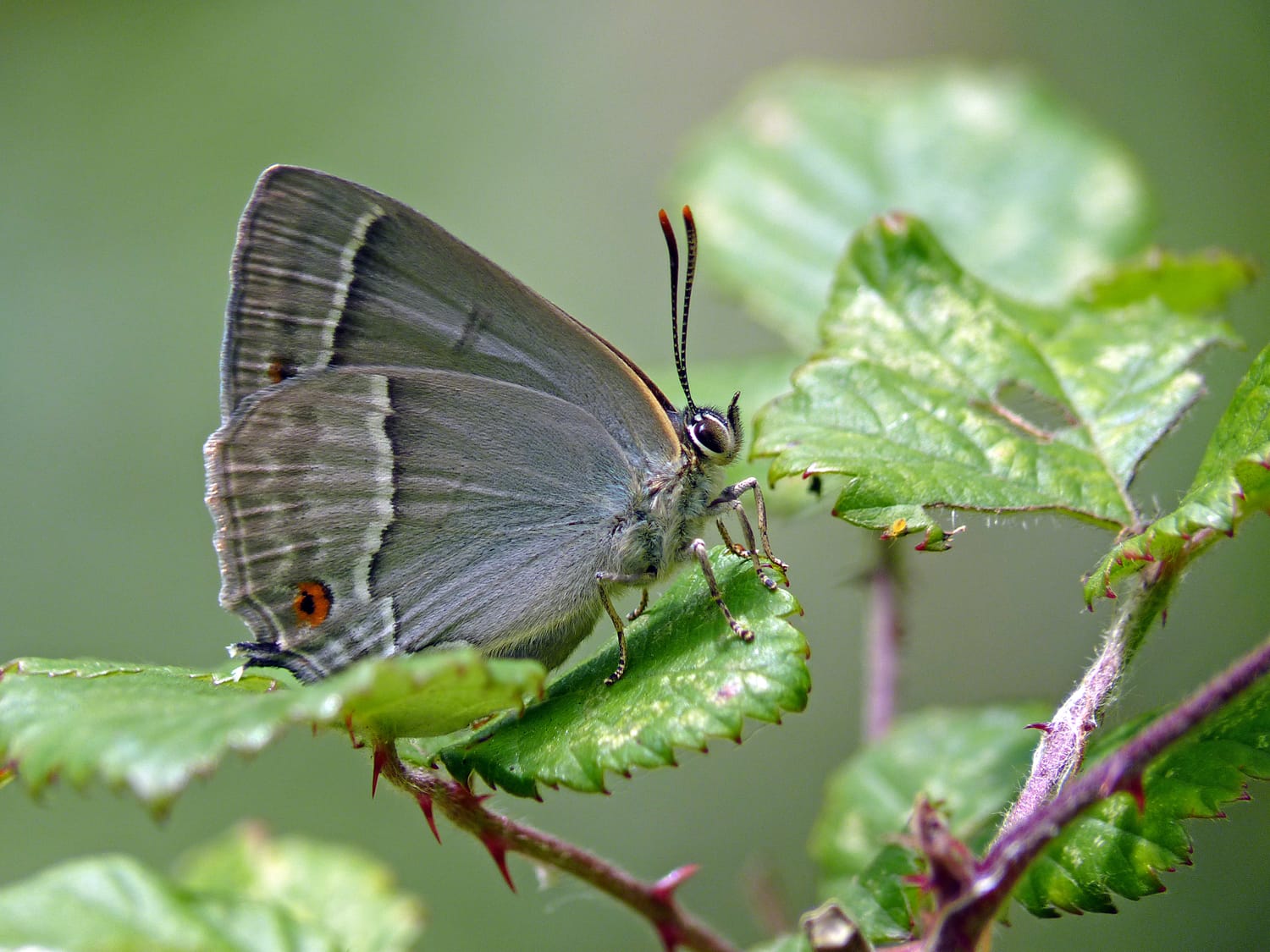
Purple hairstreaks, smaller than purple emperors, and another sought-after rarity, are flying in their thousands around Knepp’s groves of ancient oaks. These tiny butterflies, so difficult to see in the higher canopy, are now spilling out onto lower levels, skipping over blackthorn hedges, around field maples, nectaring on bramble and basking on lower branches. Neil Hulme, butterfly expert and safari guide at Knepp, reckons this may be the species’ best year for over five decades. He estimates that there may have been as many as 100,000 purple hairstreaks at Knepp this summer.
This year, we’ve recorded the large tortoiseshell again, too. This butterfly is officially listed as extinct as a breeding species in Britain but was found breeding at Knepp in 2022. Since then, sightings have been increasing across southern England.
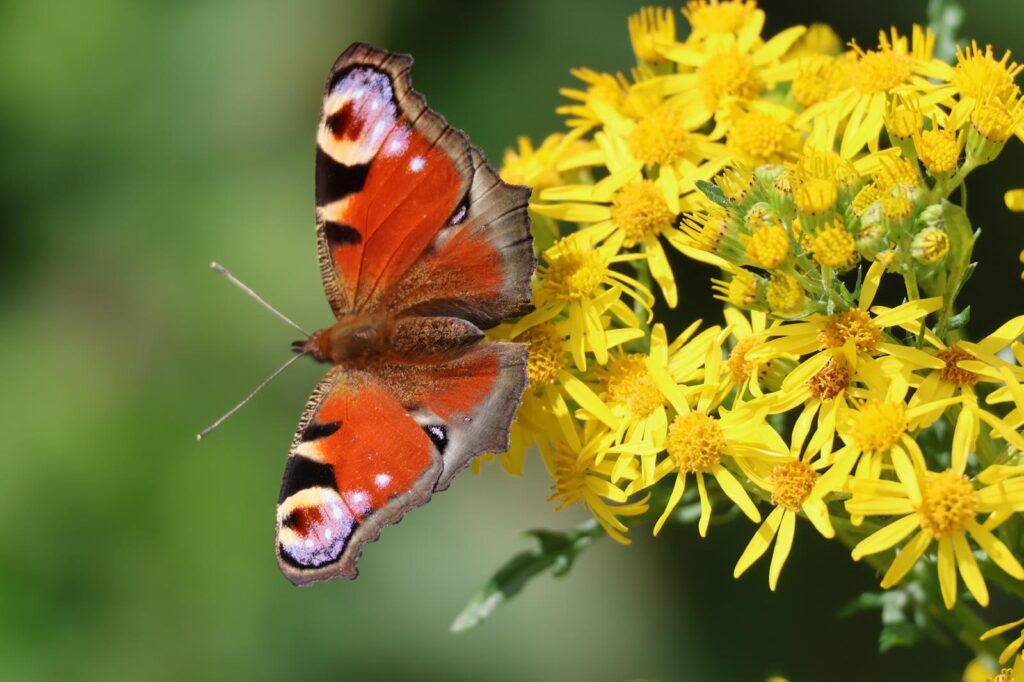
And then there’s the wall brown, spotted along our Adur river restoration at Knepp three times in recent weeks – only the second time it’s been seen at Knepp since 1970. More often associated with coastal or open grassland habitats, its reappearance here is as intriguing as it is heartening. Like the purple emperor, the wall brown may be showing us that science may have been wrong about its favourite spots. In depleted, fragmented landscapes we may be recording butterflies in their habitat of last resort, not necessarily where they want to be. By providing dynamic new, messy, complex habitats, rewilding can reveal what some species need in order to thrive.
Across the board, butterflies from marbled whites to silver-washed fritillaries, from small skippers to commas and gatekeepers, green hairstreaks and painted ladies have emerged earlier and in greater numbers than we’ve seen for years. Some butterflies are showing up well outside their expected ranges, and while others may be wanderers pushed by weather systems, much is down to the simple fact that the warm, dry spring and early summer – a tough year for livestock and farming – have been perfect for butterflies and moths.
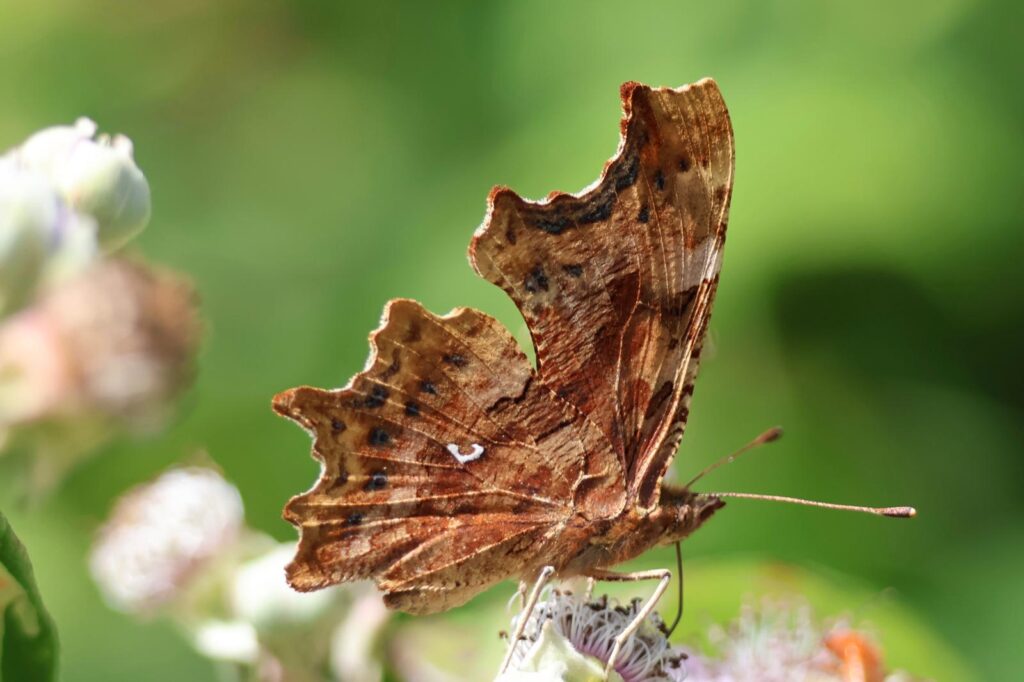
Butterflies, ephemeral though they may be, tell us more than we realise. They are harbingers of change — both the damage done and the healing underway. In a world often overshadowed by ecological loss, events like this, which will certainly be known in future as the Great Butterfly Summer of 2025 are small miracles and beacons of hope.
How timely, then, that Matthew Oates has just published his wonderful new The Butterfly Spotters’ Guide – the perfect first guide for beginners. So, bring your binoculars, your field guides, your children and your sense of wonder — this is truly a summer you won’t want to miss.
We have one or two spots left on our Butterfly Safaris this summer or join a Snail-Paced Safari.
Come and see Knepp for yourself. Find out What’s On.
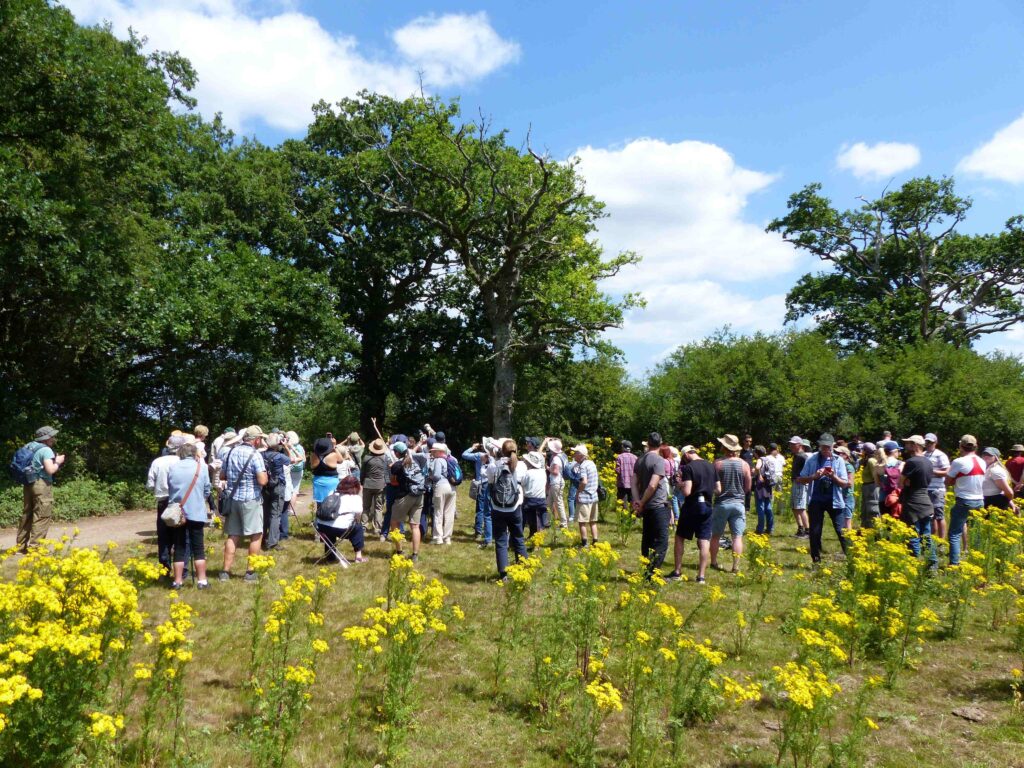
Further reading:
Matthew Oates The Butterfly Spotters’ Guide – a beautiful little beginner’s guide to Britain’s butterflies. National Trust Books, 2025.
Patrick Barkham The Butterfly Isles – a summer in search of our emperors and admirals . Granta Books, 2018.
Isabella TreeWilding – the return of nature to a British farm (Ch.10 ‘Purple emperors’). Picador, 2018.
Matthew Oates His Imperial Majesty – a natural history of the purple emperor. Bloomsbury Wildlife, 2020.
Featured image by Kat Dahl.

Wild hopes for the year ahead Published January 2026 In 2025 we hosted some of the biggest movers and shakers in the nature recovery movement

Moy Fierheller | Deputy Head Gardener December: Garden Lessons Published January 2026 Visit Knepp’s rewilded Walled Garden December is like a wavering bride-to-be, one moment

knepp’s 2025 in numbers 2025 has been quite a year. Our butterfly summer was record-breaking, we re-launched the Knepp Wilding Podcast with Isabella Tree as
Knepp Wildland Safaris, our gardens and campsite are all about the quiet and patient observation of nature.
Some of the species we are likely to encounter are shy or can be frightened by loud noises or sudden movements. Our campsite with open-air fire-pits, wood-burning stoves and an on-site pond is unsuitable for small children.
For this reason, our safaris, garden visits, holiday cottages and campsite are suitable only for children of 12 and over.
You’ll receive relevant offers and news by email. This will include information about the Rewilding Project, online store products, the Wilding Kitchen Restaurant / Cafe, and other exciting experiences / events across the Knepp Castle Estate. For more information, view our Privacy Policy.